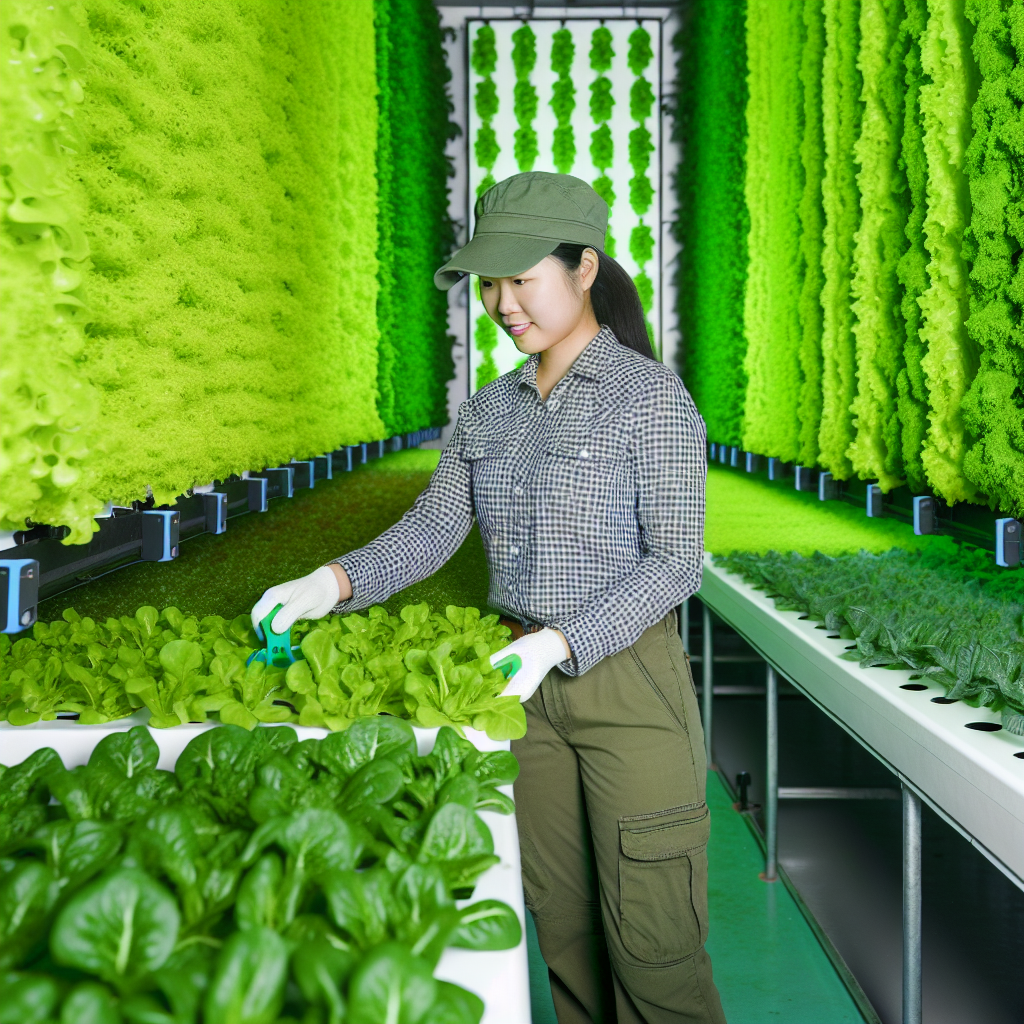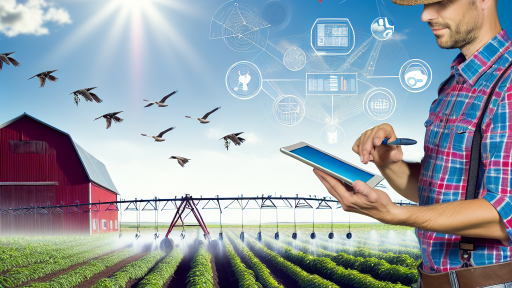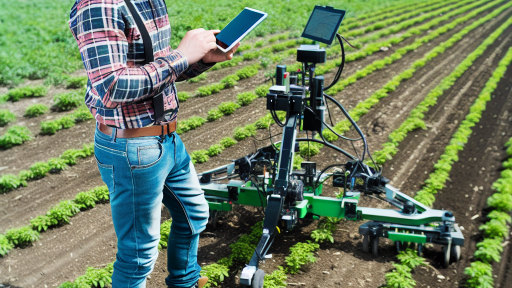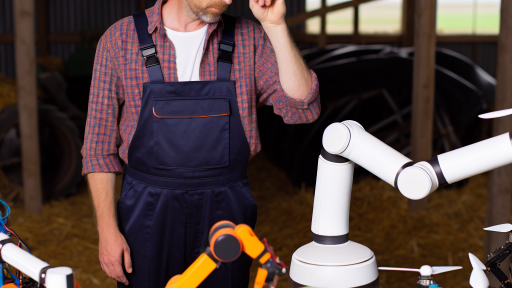Introduction to Sustainable Vertical Farming
Definition of Sustainable Vertical Farming
Sustainable vertical farming refers to growing crops in vertically stacked layers.
This innovative method optimizes space and resources effectively.
It often utilizes hydroponics, aeroponics, or aquaponics to maximize yield.
Additionally, it minimizes the use of land and water compared to traditional farming.
Importance of Sustainable Vertical Farming
Vertical farming addresses the challenges of urban food production.
It reduces the carbon footprint associated with transporting food over long distances.
Moreover, it enables local food supply, promoting food security.
This approach conserves water, using up to 90% less than conventional farming.
Furthermore, it enhances sustainability by reducing pesticide usage.
Environmental Benefits
Sustainable vertical farming contributes significantly to environmental conservation.
It helps mitigate climate change through reduced emissions.
By utilizing renewable energy sources, it further decreases ecological impact.
Also, this method supports biodiversity by integrating various crops in limited spaces.
Economic Advantages
Investing in vertical farming creates job opportunities in urban areas.
It can lead to decreased operational costs in the long run.
Transform Your Agribusiness
Unlock your farm's potential with expert advice tailored to your needs. Get actionable steps that drive real results.
Get StartedMoreover, it allows farmers to produce high-value crops year-round.
This practice opens up avenues for research and innovation in agriculture.
Social Impact
Sustainable vertical farming enhances community engagement in food production.
It fosters awareness regarding healthy eating habits and nutrition.
Additionally, it empowers local communities by providing fresher food options.
This method encourages sustainable practices among future generations.
Key Components of Vertical Farming
Structure and System Design
Vertical farming relies on innovative structure design to maximize space.
This method allows farms to produce food in urban environments.
Farm operators utilize vertically stacked layers of crops.
Additionally, these systems can integrate advanced technologies.
Hydroponics and aeroponics are popular growing methods in these setups.
Materials Used in Construction
Durable materials are essential for vertical farming structures.
Steel frames provide strength and stability for multi-level systems.
Recyclable plastics are also popular for growing trays and systems.
These materials contribute to sustainability in construction.
Climate Control Systems
Effective climate control is crucial for crop health in vertical farms.
Automated systems regulate temperature and humidity levels.
LED lighting systems enhance plant growth while conserving energy.
Moreover, carbon dioxide enrichment can improve yields.
Water and Nutrient Delivery
Water-efficient techniques are a hallmark of vertical farming.
Drip irrigation systems ensure plants receive adequate hydration.
Here, nutrients are dissolved directly into the water supply.
This method minimizes waste and maximizes plant uptake.
Automation and Monitoring Technologies
Automation plays a vital role in modern vertical farming operations.
Showcase Your Farming Business
Publish your professional farming services profile on our blog for a one-time fee of $200 and reach a dedicated audience of farmers and agribusiness owners.
Publish Your ProfileRobotics assist with planting, harvesting, and packaging crops.
Additionally, sensors monitor plant health and environmental conditions.
Data analytics help farmers make informed decisions about crop management.
Energy Efficiency Considerations
Sustainable energy use is critical in vertical farming.
Solar panels can provide renewable energy for operations.
Energy-efficient appliances reduce overall power consumption.
This approach minimizes the environmental footprint of farming practices.
Energy Efficiency in Vertical Farming: Renewable Resources and Technologies
Integration of Renewable Energy Sources
Vertical farms benefit greatly from renewable energy sources.
Solar panels are a common choice for these operations.
They harness sunlight to generate electricity efficiently.
Wind turbines also provide an effective energy solution.
These can be strategically placed to optimize energy capture.
Utilizing Energy-Efficient Technologies
Energy-efficient LED lighting is crucial for vertical farming.
They consume less power while providing ample light for plants.
Advanced HVAC systems optimize climate control in these farms.
This technology reduces energy consumption significantly.
Innovative Water Management Systems
Water conservation is essential in sustainable farming operations.
Hydroponic and aquaponic systems minimize water use effectively.
These methods recycle water, further enhancing efficiency.
Additionally, rainwater harvesting systems can be implemented.
Smart Agriculture and Automation
Implementing smart agricultural practices boosts energy efficiency.
IoT devices monitor crop conditions in real-time.
This ensures optimal growth while reducing resource waste.
Automated systems can manage tasks, improving overall efficiency.
Continuous Monitoring and Adjustments
Regular monitoring of energy usage is vital for efficiency.
Adapting operations based on data can reduce waste effectively.
Using management software enhances overall sustainability.
Farmers can analyze energy consumption patterns over time.
Uncover the Details: Comparing Traditional and Smart Irrigation Methods
Water Conservation Techniques
Hydroponics
Hydroponics utilizes a nutrient-rich water solution to grow crops without soil.
This method conserves water significantly compared to traditional farming.
Plants receive moisture directly to their roots, reducing evaporation losses.
Additionally, hydroponics allows for year-round crop production.
It minimizes land usage while maximizing output.
Farmers can control nutrient levels, ensuring optimal growth conditions.
Aeroponics
Aeroponics involves misting plant roots with a nutrient solution.
This technique is highly efficient in water usage and nutrient absorption.
It promotes faster plant growth due to increased oxygen exposure.
Furthermore, it reduces the risk of diseases associated with soil.
Aeroponics is especially suitable for urban farming environments.
Showcase Your Farming Business
Publish your professional farming services profile on our blog for a one-time fee of $200 and reach a dedicated audience of farmers and agribusiness owners.
Publish Your ProfileInnovative setups can be created in limited spaces, enhancing sustainability.
Drip Irrigation
Drip irrigation delivers water directly to the plant’s root zone.
This method minimizes water wastage through evaporation and runoff.
Farmers can customize the amount of water each plant receives.
Moreover, it reduces the likelihood of weed growth.
Drip systems are easily scalable, suitable for large or small farms.
It ultimately leads to higher crop yields with less water usage.
Discover More: Cost-Effective Sensor Solutions for Agriculture
Soil-less Cultivation Methods: Benefits and Challenges
Introduction to Soil-less Cultivation
Soil-less cultivation allows farmers to grow plants without traditional soil.
This method utilizes various techniques like hydroponics and aeroponics.
Farmers can achieve higher yields while conserving resources.
Types of Soil-less Cultivation
Hydroponics involves growing plants in nutrient-rich water.
Aeroponics uses mist to deliver nutrients directly to plant roots.
Having a clear understanding of each method helps farmers choose the best system.
Benefits of Soil-less Cultivation
Sole-less farming significantly reduces the need for pesticides.
This method promotes faster plant growth compared to traditional farming.
Additionally, it maximizes space utilization by allowing vertical farming.
Moreover, farmers can better control growing conditions and nutrient levels.
Challenges of Soil-less Cultivation
Initial setup costs for soil-less systems can be quite high.
Farmers may also face a learning curve in managing these systems.
Furthermore, reliance on technology means potential vulnerabilities in operation.
Environmental Considerations
Soil-less cultivation can reduce water usage significantly.
This method minimizes runoff, leading to less environmental pollution.
However, efficient management of nutrient solutions is crucial.
Future of Soil-less Cultivation
As technology advances, soil-less cultivation will continue to evolve.
Innovations in nutrient delivery systems will enhance productivity.
Ultimately, this approach may play a vital role in sustainable agriculture.
You Might Also Like: Maximizing Profits with Agricultural Data
Integration of Technology
Automation in Vertical Farming
Automation significantly enhances vertical farming operations.
It minimizes manual labor and optimizes resource management.
Robots facilitate planting, harvesting, and packaging tasks.
For instance, AgroBot eliminates the need for human labor during harvesting.
This technology increases efficiency and ensures consistency in production.
Smart Farming Tools
Smart farming tools are essential in sustainable vertical farming.
They provide real-time data on crop health and resource usage.
For example, sensors monitor soil moisture and nutrient levels.
AI algorithms analyze data and suggest optimal growing conditions.
This data-driven approach minimizes waste and maximizes yield.
The Role of IoT in Agriculture
The Internet of Things (IoT) connects various farming devices seamlessly.
Irrigation systems, climate controls, and sensors work in harmony.
Showcase Your Farming Business
Publish your professional farming services profile on our blog for a one-time fee of $200 and reach a dedicated audience of farmers and agribusiness owners.
Publish Your ProfileFarmers can remotely manage systems using smartphones and tablets.
This connectivity ensures quick responses to environmental changes.
Ultimately, IoT promotes sustainability and operational efficiency.
Benefits of Data Analytics
Data analytics brings numerous benefits to vertical farming operations.
By analyzing data, farmers can understand trends and patterns.
This insight aids in making informed decisions for crop management.
For instance, predictive analytics forecasts optimal planting times.
Such foresight leads to enhanced productivity and reduced risk.
Uncover the Details: Maintenance Tips for Agricultural Automated Systems

Urban Agriculture and Its Impact on Local Communities
Enhancing Local Food Security
Urban agriculture directly contributes to local food security.
It provides fresh produce to city residents.
Consequently, it reduces reliance on imported foods.
This makes communities more resilient during crises.
Creating Economic Opportunities
Urban farms often create job opportunities.
They employ local residents in various roles.
Furthermore, small businesses can flourish alongside urban farms.
As a result, the local economy benefits significantly.
Strengthening Community Ties
Urban agriculture fosters a sense of community.
It encourages neighbors to work together towards common goals.
This collaboration builds trust and improves relationships.
Additionally, it enhances local pride in shared spaces.
Improving Environmental Conditions
Urban farms can play a role in environmental sustainability.
They promote green practices, such as composting and recycling.
Moreover, urban gardens increase biodiversity in city areas.
As plants absorb carbon dioxide, air quality improves.
Promoting Health and Well-Being
Access to fresh fruits and vegetables promotes better health.
Urban agriculture supports healthier eating habits.
In addition, gardening activities can enhance mental well-being.
Community gardens create opportunities for physical activity.
Engaging with Education and Awareness
Urban farming initiatives often include educational programs.
These programs teach residents about nutrition and sustainability.
Schools can incorporate gardening into their curriculum.
Thus, urban agriculture becomes an important learning tool.
Economic Viability: Cost Analysis and Market Trends in Vertical Farming
Understanding Cost Analysis
Cost analysis is crucial for evaluating vertical farming operations.
This process examines both fixed and variable costs.
Fixed costs include infrastructure and equipment expenditures.
Variable costs encompass labor, utilities, and consumables.
Investments in technology can significantly influence costs.
Automation systems reduce labor costs over time.
However, initial investments can be substantial.
Showcase Your Farming Business
Publish your professional farming services profile on our blog for a one-time fee of $200 and reach a dedicated audience of farmers and agribusiness owners.
Publish Your ProfileMarket Trends Influencing Viability
The vertical farming industry is experiencing rapid growth.
Consumer demand for local produce drives this trend.
Moreover, urbanization is pushing farms closer to cities.
Market research shows increasing interest in sustainability.
As a result, many consumers prefer organic options.
This shift boosts sales for vertical farming ventures.
Evaluating Return on Investment
Calculating return on investment (ROI) is essential for stakeholders.
ROI metrics help predict profitability and sustainability.
Investors appreciate concise financial forecasts.
Shorter crop cycles can lead to quicker returns.
Additionally, premium pricing strategies enhance revenues.
Risks and Challenges
Despite its advantages, vertical farming faces challenges.
High setup costs can deter new entrants to the market.
Moreover, technological dependencies present risks.
Power outages or equipment failures can disrupt operations.
Regulatory hurdles may also complicate processes.
Future Outlook
The future of vertical farming looks promising.
Technological advancements continue to drive efficiency.
Furthermore, collaboration within the industry can foster growth.
Understanding economic viability is key.
Vertical farming can play a vital role in modern agriculture.
Policy and Regulations: Supporting Sustainable Practices in Agriculture
Importance of Sustainable Agriculture Policies
Sustainable agriculture policies play a critical role in modern farming operations.
They guide farmers in adopting environmentally friendly practices.
Moreover, these policies enhance food security and public health.
Regulatory Frameworks and Their Impact
Regulatory frameworks outline the rules for sustainable farming practices.
They provide standards for organic farming, water usage, and waste management.
In many regions, regulations encourage the use of renewable resources.
Local and National Collaborations
Collaboration between local governments and national bodies is vital.
Such partnerships enhance the effectiveness of sustainability initiatives.
They often share resources and information to better support farmers.
Incentives for Sustainable Practices
Governments frequently offer incentives to promote sustainable farming.
These incentives can include tax breaks and grants for eco-friendly practices.
Additionally, they may provide technical support to enhance productivity.
Financial Assistance Programs
Financial assistance programs help farmers transition to sustainable methods.
Funds can be allocated for purchasing new technologies or equipment.
These programs aim to reduce the financial burden on farmers.
Challenges in Policy Implementation
Despite the positive intentions, challenges exist in policy implementation.
Farmers may lack awareness of available programs and resources.
Moreover, bureaucratic red tape can hinder effective implementation.
Bridging the Gap
Educational outreach is essential to bridge the knowledge gap.
Showcase Your Farming Business
Publish your professional farming services profile on our blog for a one-time fee of $200 and reach a dedicated audience of farmers and agribusiness owners.
Publish Your ProfileWorkshops and training sessions can increase awareness of sustainable practices.
Community engagement also fosters a culture of sustainability among farmers.




